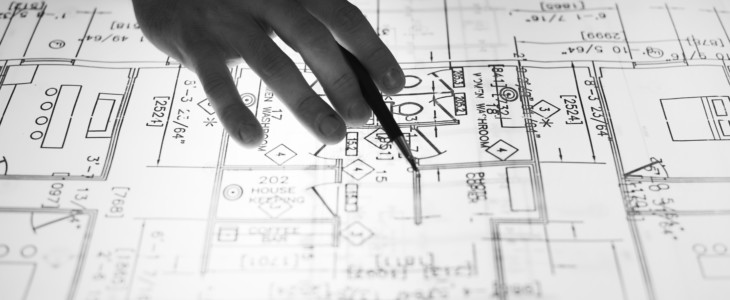Commercial Construction Lending
By Paul Long – February 2019
Sometimes when you can’t find that perfect building for your business, it is possible to build your own. Not everyone has the cash in the bank to do that, so going to your local community bank is a great option. This article will talk about the basics to commercial constructions loans, residential construction lending is a little different, so talk with your residential lender for more information about that process.
What I hear from borrowers that have done a commercial construction project before is, “Its not going to be easy.” In construction projects there are things that can go wrong during the process. Items are not delivered as you expected, subcontractors don’t show up, you decide to make a change after the drawings and it costs more, change orders etc. On the other side after you go through all of this hard work, you have a property that is exactly what you wanted for years to come. It is my hope that sharing the information about this process will help you understand, it so you have all the information to make a proper decision.
Before you start a construction project and before you purchase the land, see how much land you need and in what location. Do you plan on paying for the land in cash or do you need a land loan? What is important to know is that land loans are tough to get through banks, generally banks look for 40% down and the land should have all the utilities needed for your project already on site. Banks generally will give you a land loan for 12-24 months, during this time you need to get your project ready for construction. Some things to think to have prepared are:
- Plans- Work with a local architect to build the plans for your project.
- Budget- Have at least two bids from local contractors on how much they believe the project will cost by each line item.
- Feasibility– A feasibility study is an analysis of how successfully a project can be completed, accounting for factors that affect it such as economic, technological, legal and scheduling factors.
- Zoning- The process of dividing land in a municipality into zones (e.g. residential, industrial) in which certain land uses are permitted or prohibited.
- Permits– Check with your city, state and county for construction permit requirements.
Now that you have the land and the details taken care of, it is time to go to the bank and start the process of a construction loan. Banks will ask for this information above before starting the loan process.
It is now time to determine how much money you need to bring to the project. Each bank may have a different policy as to how much equity you need for your project. Generally, the bank will loan up to 85% Loan to Cost (LTC- Loan amount divided by cost of the project) and 75% Loan to Value (LTV- Loan amount divided by the anticipated value of the project)
- Cash down payment on the land purchase or equity in existing land can be used as equity.
- Project equity could come in the from a separate piece of real estate that isn’t involved in the construction project.
- Any pre-paid soft costs (architectural, engineering, legal fees, and other pre-construction expenses) can be included as equity.
- If cash is required for the project, funds will be required to be paid at construction loan closing.
Loan Structure/ Process/ Credit- Underwriting
Structure: The bank will structure the loan to have a 6-18-month construction period where there are Interest only payments during construction phase. The interest payment generally will come from interest reserves that are in your construction budget until depleted or converted to a permeant loan. Generally, after an occupancy permit is issued, the loan is converted into a conventional commercial term loan at a predetermined interest rate.
The Process:
Many people ask me “what should my personal financials look like” before taking on a construction project and this is as important as what you are building. Borrowers should have a credit score above 700, due to the risk of construction lending credit history is very important. Also, your experience doing these projections in the past is also favorable, however if you are using a general contractor (which I hope you are) the bank will underwrite them to make sure that they have experience building projections that are comparable to yours.
Because constructions projects can go over budget banks will put in 3-10% contingency in the budget, but in the rare cases where that is fully used, the bank will come back to the borrower for an additional cash infusion. That is why we suggest borrowers having net worth greater than $750,000 and extra cash of about $50-$150 at minimum is also suggested. Finally, the borrower needs to have stable recurring cash flow from employment or self-employment to also assist with additional cash if needed.
There is much more to a commercial construction project so feel free to check out my Construction Lending Overview Sheet here which can give you additional information on the process. You can also reach out to me or your local community bank for more information.
Having your own building that you built to your specifications is great, but like most things in the world all good things take time, hard work and patience.





Comments are closed